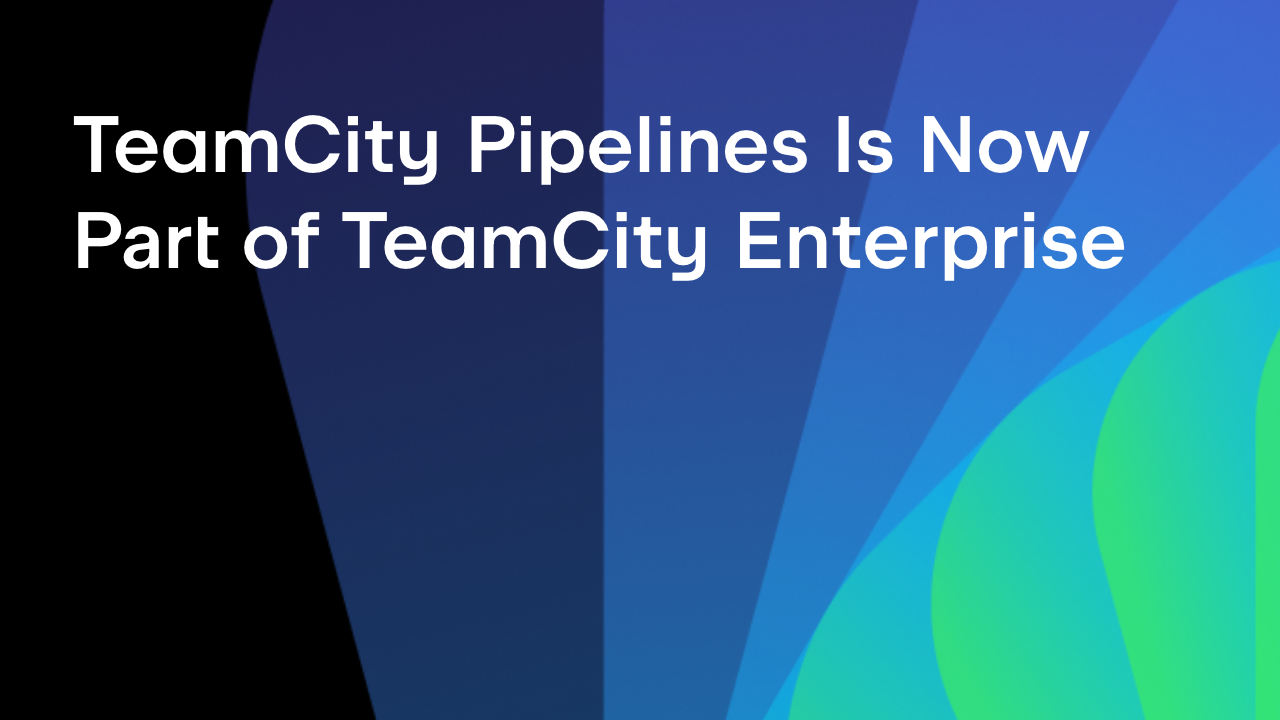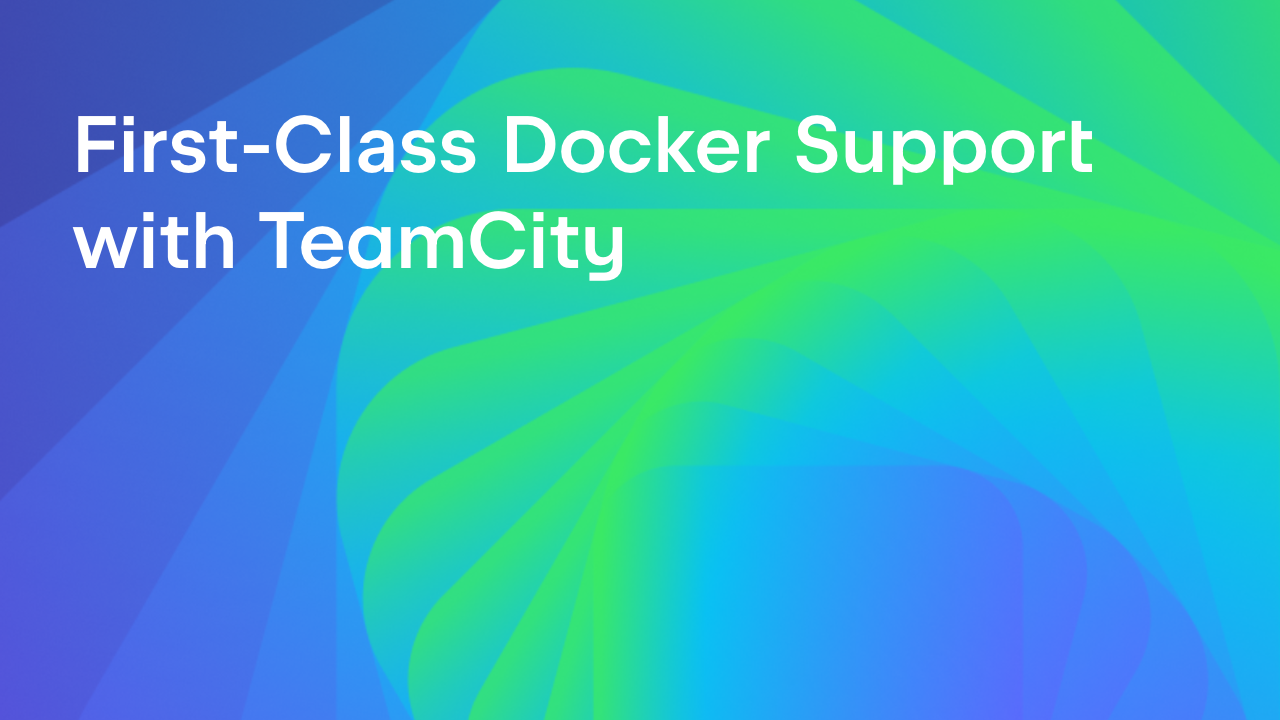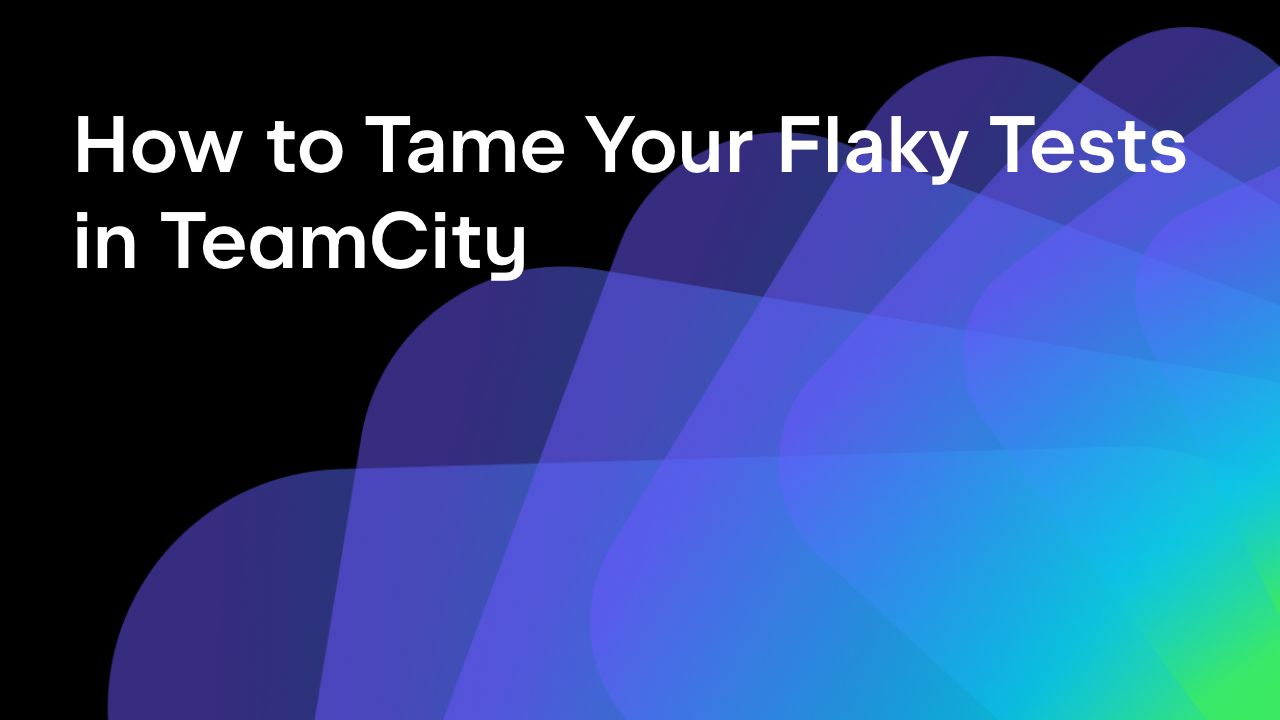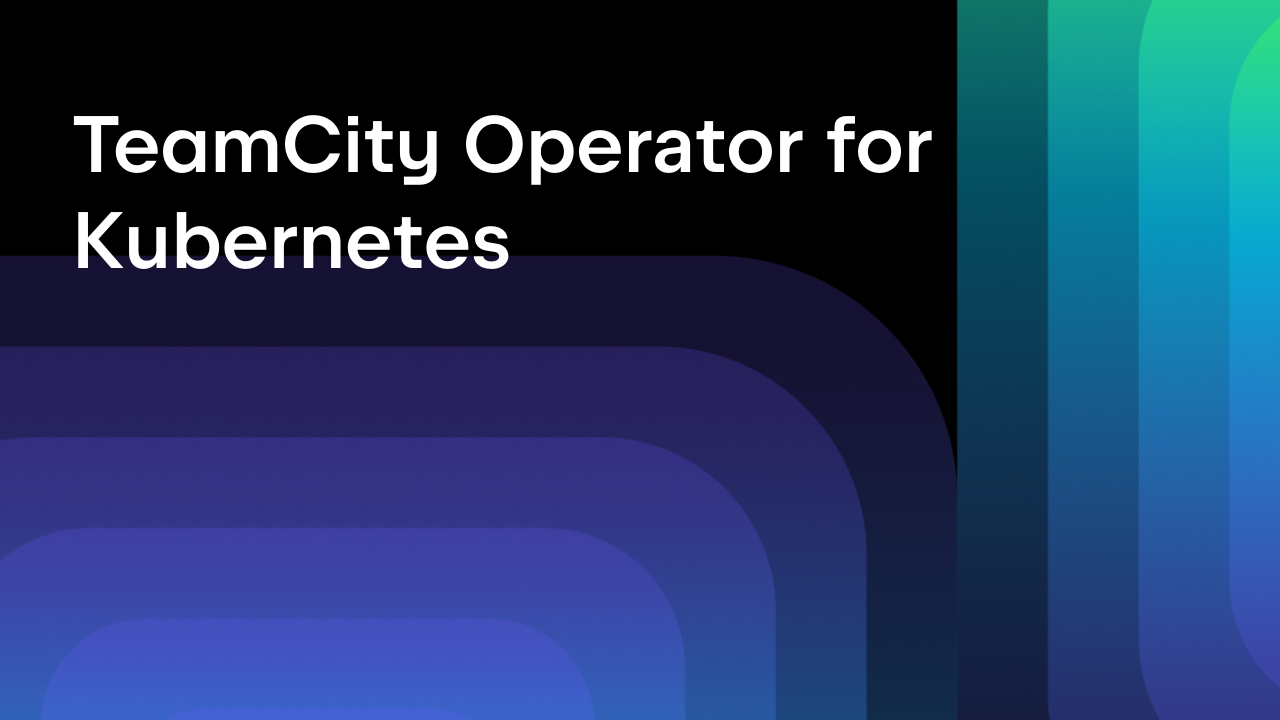TeamCity
Powerful CI/CD for DevOps-centric teams
What’s New in TeamCity 2025.07: Public Recipes, Pipelines, Dependency Control, and More
We’re excited to announce the launch of TeamCity 2025.07! This release brings a range of improvements across the UI, Perforce integration, recipes, and more.
It is also the first version to include pipelines: a reimagined TeamCity experience that focuses on a healthy balance of functionality and an intuitive design-first workflow.
Read on to learn what’s new.
Public recipes
In version 2025.03, we announced the deprecation of classic TeamCity meta-runners and a shift to fluent, YAML-based recipes. You can now find around 20 JetBrains-authored recipes on JetBrains Marketplace. These extend TeamCity’s built-in capabilities with integrations for various tools (AWS CLI, Slack, Node.js, and more) and introduce automation for routine actions like pinning builds, tagging, and publishing artifacts mid-build.
This release also introduces support for third-party recipes. You can now upload your own to the Marketplace and explore community-created options. All third-party recipes are verified by JetBrains and certified as safe to use in any project.
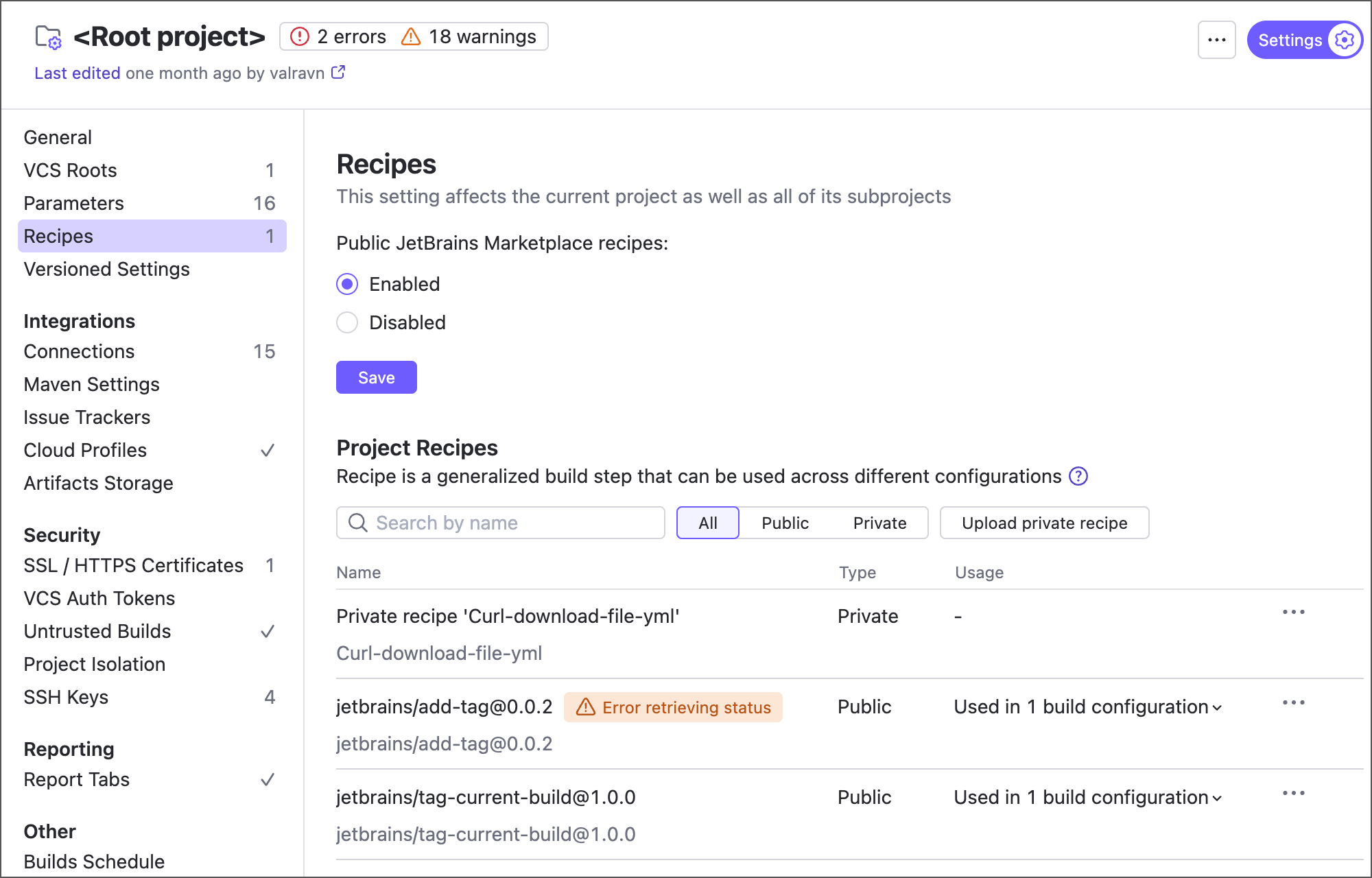
Learn more: Working with recipes
UI updates
As part of our ongoing effort to simplify and enhance the TeamCity UI, this release introduces several updates. Highlights include a redesigned side panel that can now auto-hide to maximize your workspace, a new What’s New widget to keep you informed of key updates, an improved Projects dropdown menu, and more.
TeamCity pipelines now in early access
In several earlier release cycles, we introduced major UI updates to pave the way for integrating TeamCity Pipelines into the core product. With the 2025.07 update, pipelines are finally available on regular TeamCity servers as part of our Early Access Program (EAP).
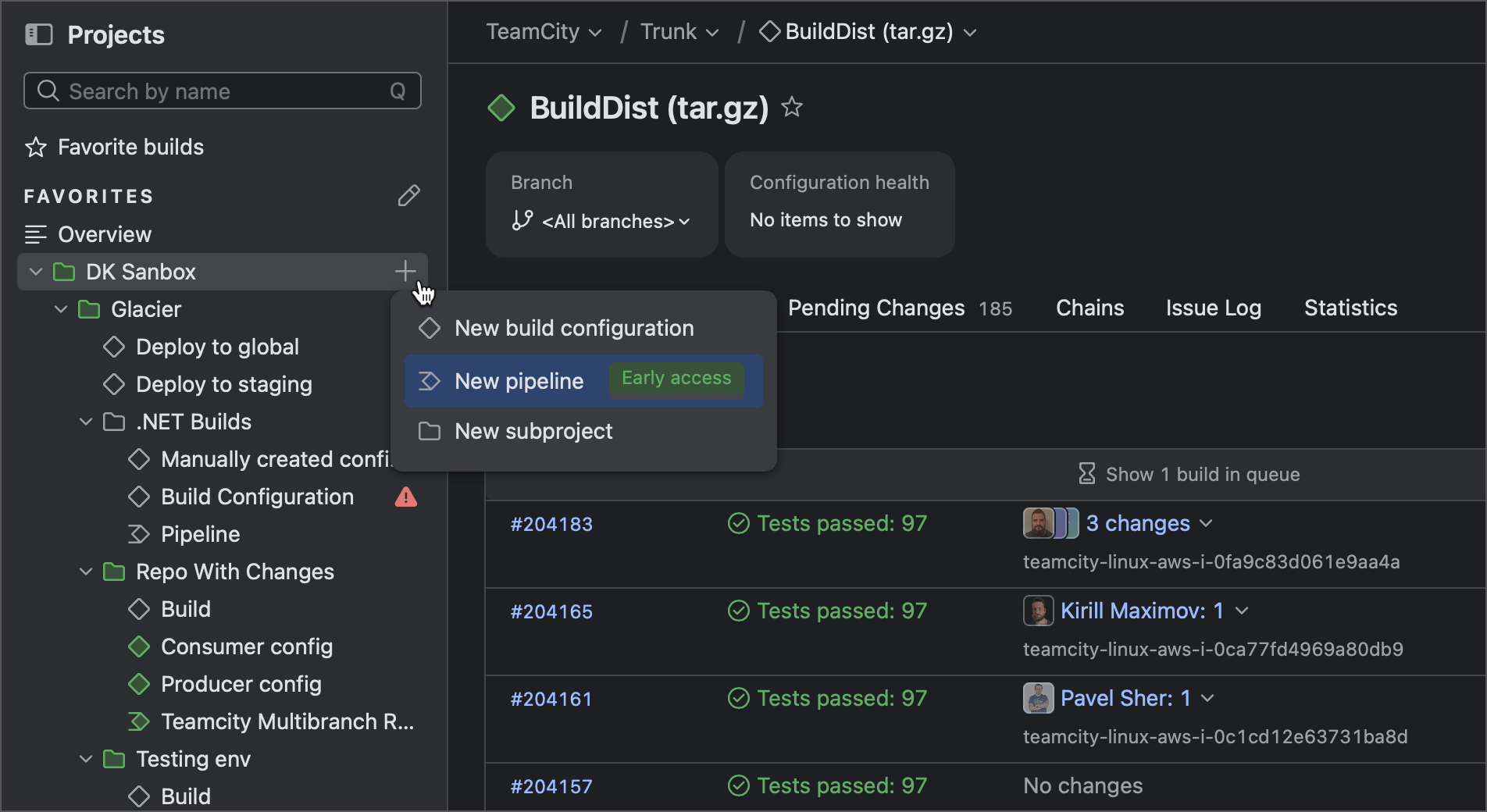
Pipelines offer an intuitive, user-friendly interface designed to simplify CI/CD setup. Easily configure private container and NPM registry connections in a few clicks, use YAML to create building routines from scratch, manage output files and parameters from a single menu, define job dependencies using our visual editor’s intuitive drag-and-drop interface, and more.
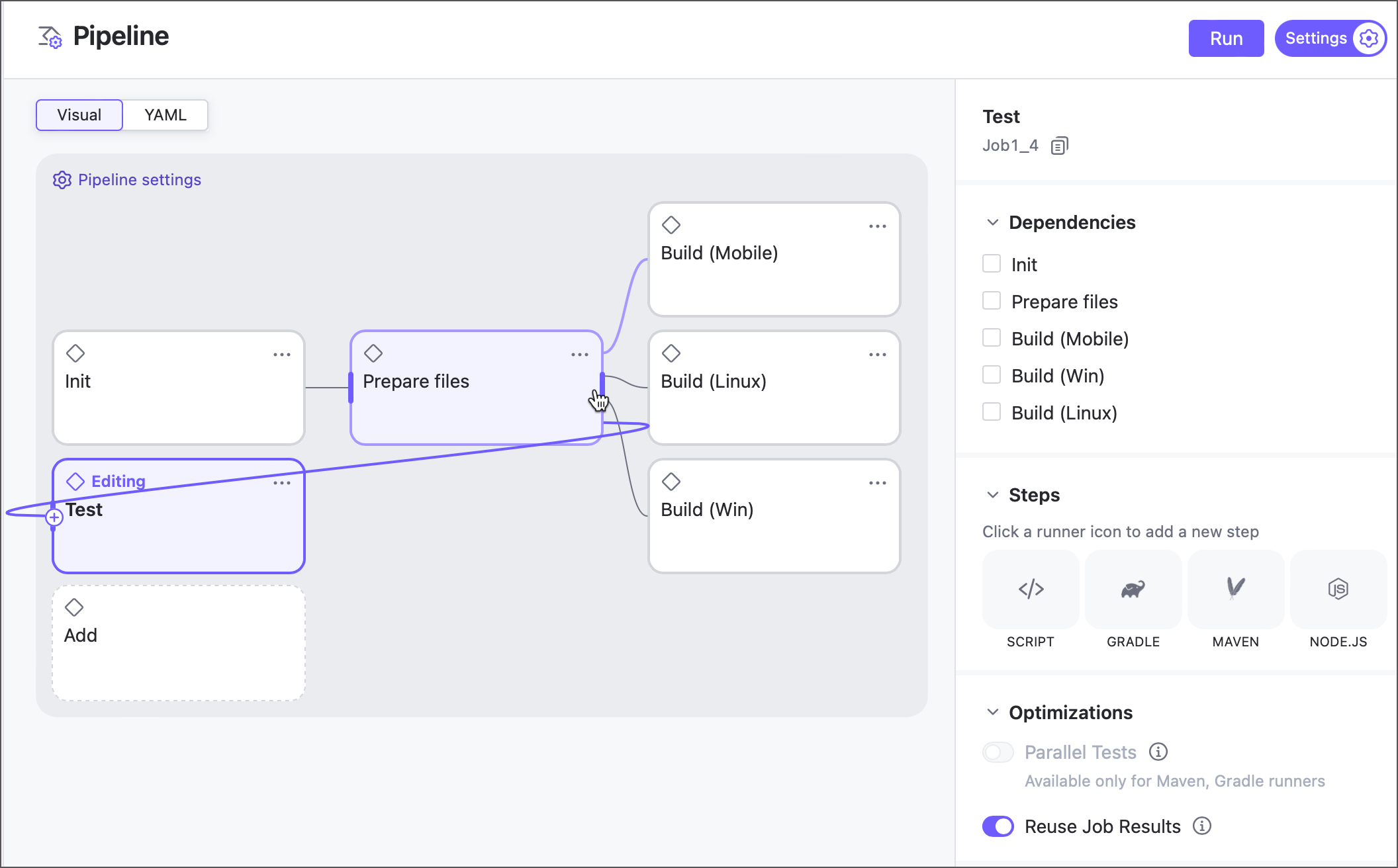
That said, pipelines are still evolving and currently support a very limited number of build steps and features. We expect to deliver the first feature-complete version of this functionality in TeamCity 2025.11.
To avoid confusing users who expect the full range of TeamCity capabilities without compromise, we’ve opted to keep pipelines initially hidden from the main TeamCity UI.
If you’re ready to give the pipelines EAP a try, head over to the dedicated page or click the Join Early Access program link in the TeamCity UI. You’ll find a transparent overview of current features, limitations, and our roadmap.
Leave your email, and we’ll send you simple setup instructions – it only takes a few clicks and doesn’t require you install any additional patches or software beyond your 2025.07 server.
Project isolation
By default, any project’s build configuration can add snapshots and artifact dependencies to your configurations. This means any external project can start new builds and/or import artifacts produced by your configuration.
Starting with version 2025.07, you can isolate sensitive configurations using the corresponding Project isolation section of your project settings.
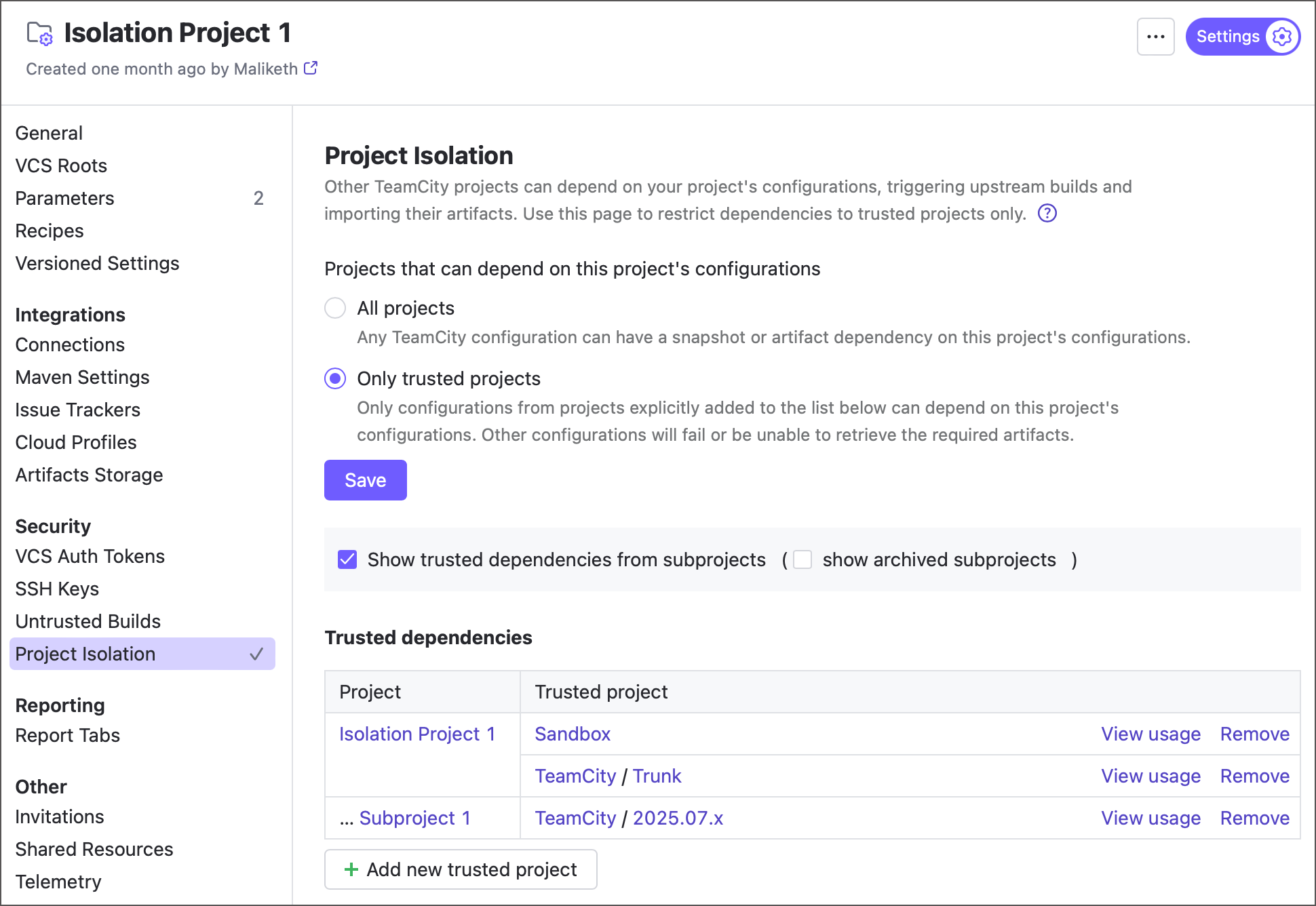
Learn more: Project isolation
Kubernetes Executor updates
Introduced several releases ago, Kubernetes executor leverages your existing Kubernetes clusters by turning them into independent orchestrators for TeamCity builds. Unlike with regular cloud agents that are fully managed by TeamCity, this integration allows the server to offload the build queue to a k8s cluster, granting the latter full control over the pod lifecycle.
TeamCity 2025.07 introduces a range of Kubernetes executor updates:
- Executors are now natively integrated into TeamCity’s default prioritization mechanism. When a build is queued, TeamCity first checks for a free self-hosted agent, then for cloud profiles that can launch a compatible agent. If none are available, the build is offloaded to an executor.
- Implicit agent requirements are now correctly recognized. Build steps can impose implicit tooling requirements on agents, like requiring Docker or Podman for containerized steps, or the .NET 8 SDK for .NET builds. As of 2025.07, TeamCity can correctly match these requirements with pod specifications, ensuring builds are never offloaded to executors that cannot run them.
- There are numerous bug fixes for various issues, such as TeamCity ignoring the maximum build limit, PowerShell steps failing to run, excessive build log errors, and more.
Learn more: Kubernetes Executor
Enhanced build approval conditions
Before version 2025.07, each build approval rule was treated as a separate condition. All conditions had to be met for the build to proceed. For instance, the following setup requires four votes: two from the QA group, one from a team lead, and one from a project admin:
user:teamlead user:projectadmin group:QA:2
Starting with TeamCity 2025.07, you can merge individual users and groups into a single entity with a shared vote count. The following rule now only requires any two votes from members of the specified groups:
(groups:QA,users:teamlead,projectadmin):2
This allows flexible combinations, such as two QA members, one QA member and a team lead, etc.
Learn more: Build approval
Perforce integration enhancements
Support for multiple shelve triggers
Build configurations now support multiple Perforce shelve triggers. Previously, adding one trigger blocked the option to add more via the TeamCity UI.
Clear TeamCity-generated workspaces
You can now clear both agent and server workspaces created by TeamCity.
- Configurations with stream-based Perforce VCS roots now feature an updated Delete Perforce Workspaces… dialog. It lets you remove inactive workspaces created by build agents, with the inactivity period (in days) selectable within the dialog.
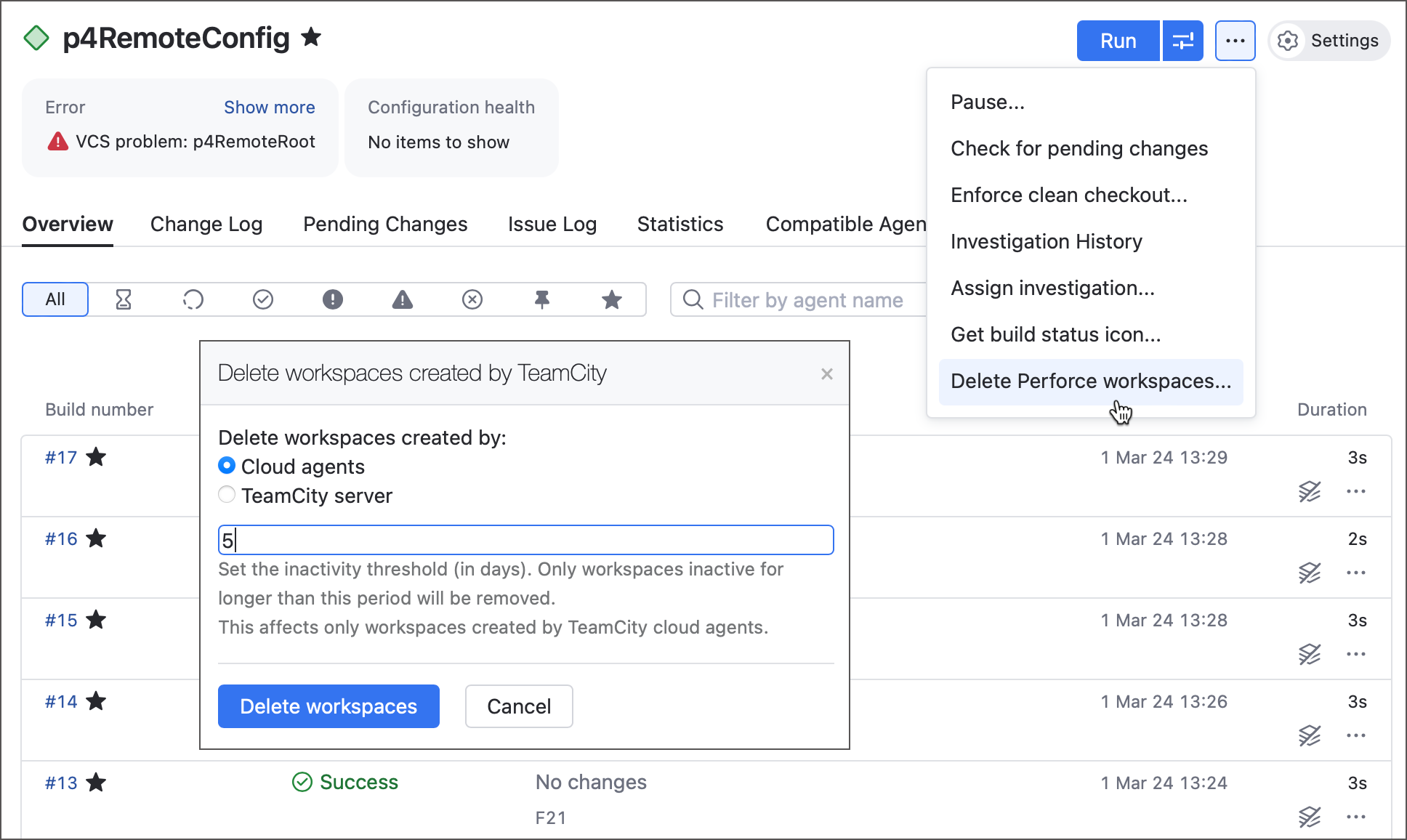
- The Perforce Administrator Access connection and Perforce VCS root settings now include an option to automatically remove workspaces created by TeamCity build agents. Enabling this in the VCS root clears workspaces from both bare-metal and cloud agents after builds finish, while the connection setting removes cloud agent workspaces during scheduled server clean-ups.
Miscellaneous enhancements
- TeamCity now recognizes the
<kotlin.compiler.incremental>true</kotlin.compiler.incremental>line in DSL pom.xml files, which allows you to enable incremental compilation for your Kotlin scripts. - You can now override the server callback URL that TeamCity OAuth connections utilize by setting the new
teamcity.oauth.redirectRootUrlOverrideinternal property. - SSH keys uploaded or generated in TeamCity are now stored in encrypted form, reducing the risk if the data directory is compromised. Keys added before the server upgrade remain unencrypted, so you must re-upload them to enable encryption.
Subscribe to TeamCity Blog updates


